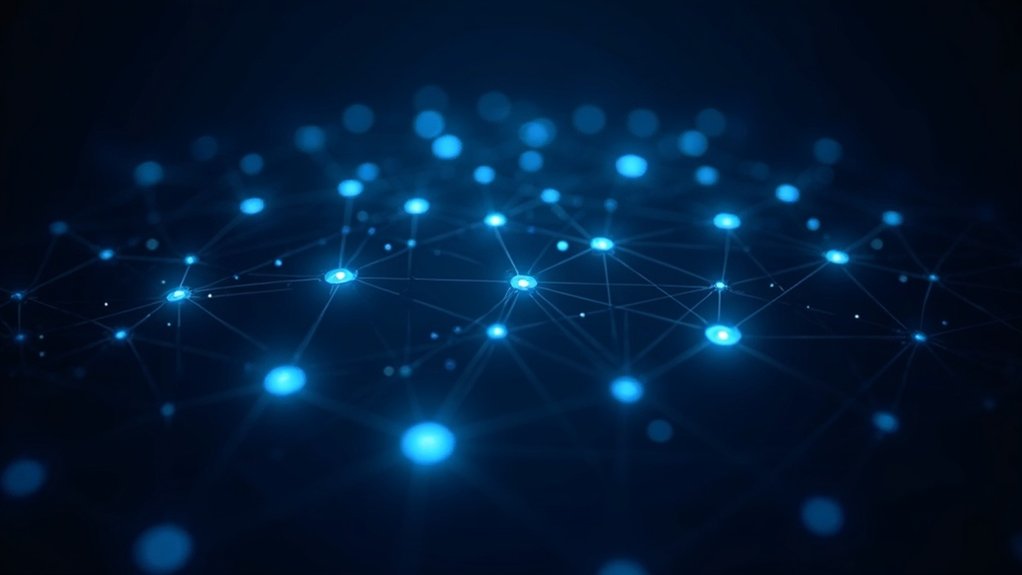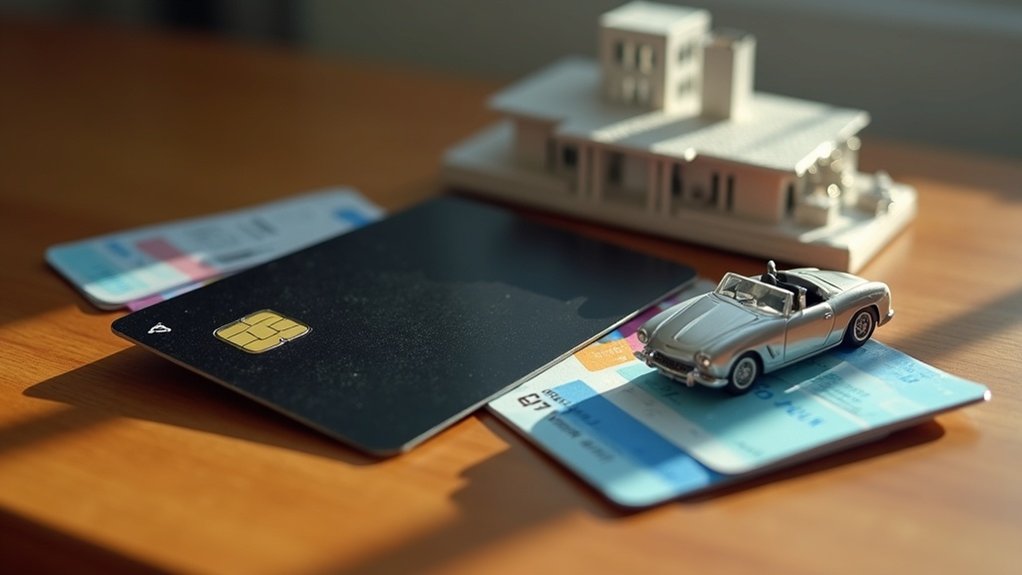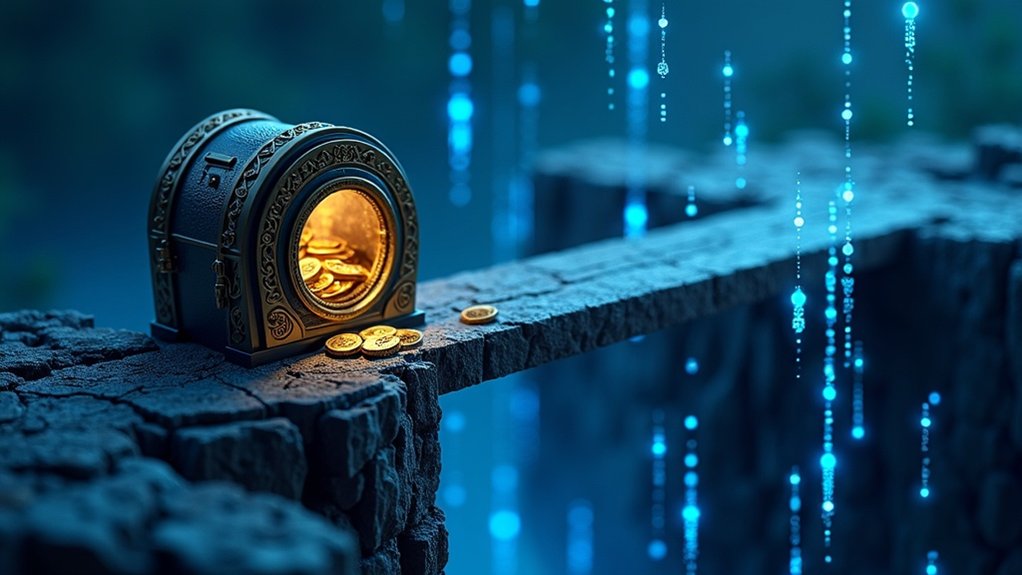A DAO (Decentralized Autonomous Organization) is a blockchain-based entity run without central authority. No CEOs here, just code and community. DAOs operate through smart contracts on platforms like Ethereum, automatically executing decisions voted on by token holders. Members get voting power based on their stake. MakerDAO and Decentraland are notable examples, though early attempts faced hacks. These digital collectives manage treasuries worth billions, eliminating geographical barriers. The concept isn’t perfect, but it’s reshaping how organizations function in crypto.
What exactly happens when you remove the boss from an organization?
No CEO to blame.
No headquarters to picket.
No single point of failure.
That’s the whole idea behind DAOs – Decentralized Autonomous Organizations – the corporate structure that crypto enthusiasts can’t stop talking about.
DAOs operate on blockchain technology without central authority.
Instead of suits in a boardroom, they’re governed by code – specifically smart contracts that execute automatically when conditions are met.
Pretty neat trick.
These digital entities run entirely on rules encoded into their foundation, making them transparent and, theoretically, incorruptible.
The backbone of any DAO is community governance.
Built on Ethereum’s smart contracts, DAOs enable truly decentralized decision-making across various industries.
Members hold tokens that grant voting rights proportional to their stake.
Got more tokens?
Your vote carries more weight.
Simple as that.
When someone proposes a change – maybe investing the treasury or updating the code – token holders vote.
Democracy in action, just with fewer kissed babies and campaign promises.
Membership is straightforward: own the tokens, join the club.
These tokens trade on markets like any cryptocurrency.
Buy in, sell out.
The system links ownership directly to decision-making power, creating skin-in-the-game incentives for good governance.
DAOs aren’t just theoretical constructs either.
They’re running right now across the crypto landscape.
MakerDAO manages a stablecoin system worth billions.
Decentraland lets token holders determine the rules of their virtual world.
Investment DAOs pool resources to back projects no single member could afford alone.
Early attempts weren’t without hiccups.
Remember “The DAO” on Ethereum?
Hackers drained millions before anyone could stop them.
Hard lesson learned.
Despite challenges, DAOs represent a radical rethinking of organizational structure.
No HR department.
No middle management.
Just code, community, and collective decision-making.
DAOs eliminate geographical barriers by operating as universal services accessible to anyone with an internet connection.
It’s an experiment in removing human gatekeepers from the equation.
Each DAO features built-in treasuries that can only be accessed when members collectively approve transactions.
Will DAOs replace traditional companies?
Probably not anytime soon.
But they’re carving out their own niche in the digital economy – bosses not included.
Frequently Asked Questions
How Do DAOS Handle Legal Compliance in Different Jurisdictions?
DAOs navigate a legal patchwork across jurisdictions. Some places embrace them—Wyoming, Tennessee, and the Marshall Islands offer formal legal recognition as specialized LLCs. Others? Not so much.
DAOs often register in crypto-friendly offshore locations like Switzerland or Singapore to dodge regulatory headaches.
But let’s be real—their borderless, internet-native nature creates compliance nightmares.
Most operate in multiple jurisdictions simultaneously, forcing them to either adapt their governance or risk legal consequences. Not easy.
What Cybersecurity Risks Are Specific to DAOS?
DAOs face unique cybersecurity threats beyond typical crypto risks.
Smart contracts with coding flaws enable re-entrancy attacks and fund theft.
Governance vulnerabilities let wealthy “whales” hijack voting outcomes.
Reliance on intermediaries introduces human error risks.
Oracle manipulation can feed false data into DAO decision-making.
And let’s not forget the blockchain itself—51% attacks could devastate operations.
The immutable nature of smart contracts? Great until you need to patch a security hole.
Then you’re really screwed.
Can DAOS Integrate With Traditional Financial Systems?
DAOs can integrate with traditional finance, but it’s complicated.
Legal barriers are everywhere.
Wyoming’s trying with their DAO Law, classifying them as DUNAs.
Nice try, guys.
Technical challenges exist too.
Smart contracts don’t exactly play well with legacy banking systems.
Some hybrid models are emerging though.
MakerDAO’s doing it – sort of – with collateralized loans tied to real-world assets.
Financial institutions are curious, experimenting with DAO concepts.
But KYC and AML requirements? Major headaches for anonymous, decentralized systems.
How Do DAOS Resolve Conflicts Between Token Holders?
DAOs resolve conflicts through structured mechanisms.
Mediation uses respected community members to facilitate dialogue.
Arbitration platforms like Kleros deploy randomly selected juries for binding decisions.
Smart contract multisigs prevent unilateral actions.
Escalation protocols exist when conflicts intensify.
Governance structures include neutral committees and transparent tracking of actions.
Accountability remains tricky though—pseudonymous participants complicate enforcement.
Token transferability can either help or hurt conflict resolution, depending on restrictions.
These systems aren’t perfect.
But they’re evolving.
What Metrics Determine a Successful DAO Implementation?
Successful DAOs thrive on robust community metrics: participation rates above 40%, healthy proposal frequency (12 monthly), and voter turnout near 75%.
Financial health matters too—diversified treasury, balanced token distribution, and solid liquidity.
Good governance shows in efficient voting processes and power distribution that isn’t concentrated in a few wallets.
Social sentiment can’t be ignored either.
The best DAOs nail these metrics without becoming glorified oligarchies.
Not easy, but that’s decentralization for you.








